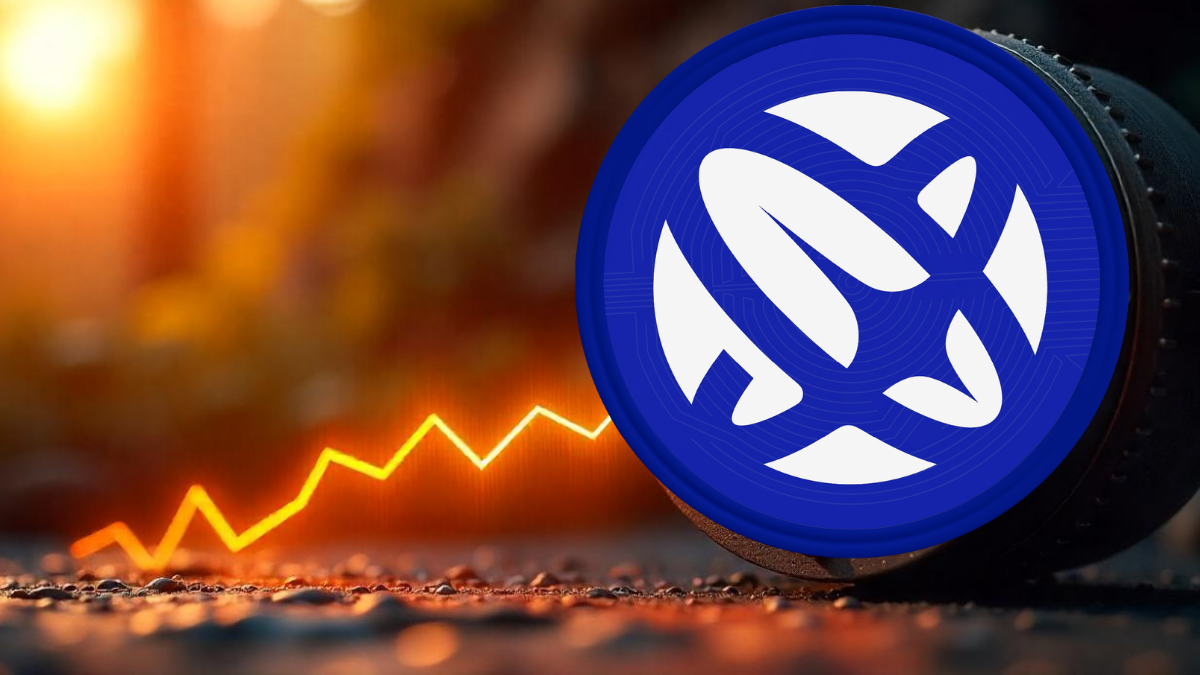The Allure and Anatomy of the Crypto 30x. The concept of a “crypto 30x” is the modern-day equivalent of a gold rush legend. It’s the siren song that draws thousands of new participants into the digital asset space, fueled by stories of early Bitcoin adopters, Ethereum ICO investors, and those who stumbled upon a meme coin that defied all logic. The promise is intoxicating: turning a modest investment of a few thousand dollars into a life-changing sum. But behind the hype and the headlines lies a complex, high-stakes game of research, timing, psychology, and no small amount of luck. This isn’t about getting rich quick; it’s about understanding the intricate mechanics that can lead to such extraordinary returns and navigating the treacherous path with your capital—and sanity—intact.
To the uninitiated, a 30x return might seem like a fantasy. In traditional markets, such gains over a short period are nearly unheard of, often taking decades to achieve. The crypto market, however, operates on a different paradigm. Its youth, volatility, and direct connection to disruptive technological innovation create a fertile ground for exponential growth. A project solving a genuine problem can go from a mere idea to a multi-billion dollar ecosystem in a matter of months. This guide is designed to demystify the process. We will move beyond the superficial chatter and delve deep into the strategies, the mindset, and the analytical frameworks that separate the informed speculator from the reckless gambler. We will explore what a 30x investment truly requires and whether this legendary feat is still attainable in an increasingly mature and competitive landscape.
Understanding the 30x Phenomenon in a Volatile Market
A 30x return means that an asset’s value has multiplied thirty times over from your initial entry point. If you invest $1,000, a 30x gain would see that position grow to $30,000. In the context of cryptocurrencies, these monumental surges are not isolated to a single bull run; they are a recurring feature of the market’s cycles. However, it is crucial to understand that these gains are rarely linear. The path to a 30x is typically a rollercoaster of violent drawdowns, explosive breakouts, and agonizing periods of stagnation. This volatility, while being the very engine of such high returns, is also the primary source of risk, capable of wiping out portfolios just as quickly as it built them. The Allure and Anatomy of the Crypto 30x.
The foundational reason why 30x returns are possible in crypto, and not in equities or forex to the same degree, boils down to market capitalization and liquidity. A new cryptocurrency can launch with a market cap of just a few million dollars. If it captures a compelling narrative, attracts a dedicated community, and solves a real-world issue, the influx of capital can be rapid and enormous. Moving a project from a $10 million market cap to a $300 million market cap is a 30x gain and is statistically far more plausible than moving Apple’s market cap by 30x. This low initial valuation provides the runway for exponential growth, but it also means the asset is highly illiquid and susceptible to manipulation and hype, making the journey incredibly perilous for unprepared investors.
The Essential Pillars of a Potential 30x Gem
Not every cryptocurrency is capable of achieving a 30x return. In fact, 99% of them are not. The ones that do often share a common set of fundamental characteristics that act as the bedrock for their success. Identifying these pillars before a project garners mainstream attention is the core skill of a successful crypto hunter. It requires looking beyond the price chart and into the very DNA of the project: its technology, its team, and its community.
The first and most critical pillar is a strong and verifiable founding team. Anonymous teams can sometimes succeed, but they carry an inherent red flag. Ideally, you want a team of developers and leaders with a public track record, relevant experience in blockchain or related tech fields, and a clear, long-term vision. Scrutinizing their GitHub activity is a non-negotiable step. Are they consistently pushing code? Is the community engaged with their development updates? A team that is transparent, accessible, and consistently working is a positive indicator. Conversely, a team that over-promises, focuses solely on marketing, and has no tangible product is a project to avoid at all costs.
The second pillar is a compelling and necessary use case. The market is saturated with projects that are solutions in search of a problem. A potential 30x candidate needs to address a genuine pain point within the crypto ecosystem or the broader world. Does it offer vastly superior scalability compared to Ethereum? Does it enable true privacy for transactions? Is it creating a new paradigm for decentralized physical infrastructure networks (DePIN) or real-world assets (RWA) tokenization? The utility must be clear, valuable, and difficult to replicate. The narrative around this use case must be strong enough to attract developers, users, and investors, creating a powerful network effect that fuels organic growth.
| Characteristic | Low Potential Project | High 30x Potential Project |
|---|---|---|
| Team | Anonymous, no prior experience, inactive on socials. | Doxxed, proven track record, active and transparent. |
| Tokenomics | High inflation, large allocation for team/VCs with no vesting. | Fair launch, sensible vesting schedules, deflationary mechanisms. |
| Community | Paid shillers, low engagement, focus only on price. | Organic growth, strong Discord/TG, builder mentality. |
| Use Case | “Ethereum killer” with no innovation, vague promises. | Solves a specific, acute problem with novel tech. |
| Competition | Heavily saturated market with established leaders. | First-mover in a new, emerging narrative. |
Mastering the Art of Research and Due Diligence
The difference between an educated bet and a blind gamble in the pursuit of a crypto 30x is the depth and quality of your research. This process, known as due diligence (DD), is your primary shield against scams, rug pulls, and simply bad investments. It involves peeling back every layer of a project to assess its true potential and its inherent risks. In an arena where misinformation is rampant and hype can be manufactured, your ability to conduct thorough, unbiased research is your most valuable asset.
Begin with the foundational documents: the whitepaper and the litepaper. A whitepaper should be a detailed technical document outlining the project’s technology, architecture, tokenomics, and roadmap. Be wary of whitepapers that are overly marketing-focused, filled with fluff, or light on technical specifics. The litepaper is often a more accessible summary, but both should be coherent and professionally presented. Next, dive deep into the tokenomics. This is arguably the most important part of your research. You need to understand the total supply, circulating supply, emission schedule (inflation), and allocation. Ask critical questions: What percentage of tokens are allocated to the team and investors? Are they locked with a sensible vesting schedule (e.g., 2-4 years), or can they dump on retail investors immediately? Is the token genuinely useful within the ecosystem, or is it merely a speculative vehicle? A project with predatory tokenomics is doomed to fail, regardless of how good the technology is.
“The cryptocurrency market is a marketplace of ideas, and the most valuable asset you can possess is the ability to separate substance from hype. The noise is deafening, but the signal is found in code commits, governance forums, and thoughtful economic design.” — Anonymous Crypto Analyst
Furthermore, you must investigate the community and social presence. Join the project’s Discord server and Telegram group. Don’t just lurk; engage. Is the community genuinely interested in the technology and the use case, or is the conversation solely focused on price speculation and “moon” predictions? How do the moderators and team members interact with the community? Are questions answered thoughtfully, or are dissenters and critics quickly banned? A healthy, engaged, and intelligent community is a powerful growth engine. A toxic, purely speculative community is a major red flag. Finally, analyze the competitive landscape. Understand what other projects are trying to solve the same problem and how this project is different or better. True 30x opportunities often exist at the frontier of new narratives where competition is still minimal.

The Crucial Role of Narrative and Market Cycles
In traditional finance, fundamentals often drive long-term value. In crypto, especially in the short to medium term, narrative is king. A compelling story can propel a token with mediocre technology to staggering heights, while a project with superior tech but a weak narrative can languish in obscurity. Understanding and anticipating market narratives is therefore a critical skill for anyone hunting for exponential returns. These narratives are rarely about technology alone; they are about human psychology, cultural trends, and the overarching story of each market cycle.
Every bull market is fueled by a dominant narrative. In 2017, it was the ICO boom and the rise of “Ethereum killers.” In 2021, it was the emergence of DeFi (Decentralized Finance), NFTs (Non-Fungible Tokens), and the altcoin season. The next cycle will undoubtedly be driven by new, evolving narratives. Currently, strong contenders include Real-World Assets (RWA), the tokenization of everything from real estate to government bonds on-chain; Artificial Intelligence (AI),
crypto projects that leverage or enhance AI functionality; DePIN (Decentralized Physical Infrastructure Networks), which incentivize the building of real-world hardware networks via crypto tokens; and the continued evolution of Layer 2 scaling solutions and zero-knowledge proof technology. Identifying which narrative has the legs to run before it becomes mainstream news is where the largest gains are captured.
This is intrinsically linked to the concept of market cycles. The crypto market moves in distinct phases: accumulation, markup, distribution, and markdown. The goal is to accumulate assets during the bear market or early in the accumulation phase when prices are low, sentiment is negative, and no one is paying attention. This is when the deepest research is done. The 30x gains are then realized during the markup phase (the bull run) when the narrative you bet on becomes the talk of the town, and euphoria drives masses of new capital into the space. Trying to find a 30x gem at the peak of a bull market is a recipe for catastrophic losses. Patience and cyclical awareness are not just virtues; they are necessities.
Advanced Strategies for Entry, Exit, and Position Sizing
Finding a project with 30x potential is only half the battle. The other, perhaps more difficult half, is managing your investment through the tumultuous journey. This involves sophisticated strategy around when to enter, how much to invest, and critically, when to take profits. Emotion is the enemy of rational decision-making, so having a pre-defined plan is essential to avoid common pitfalls like FOMO (Fear Of Missing Out), panic selling, and diamond-handing a winner all the way back down to breakeven.
Dollar-Cost Averaging (DCA) In is a fundamental strategy, but for high-risk, high-potential assets, a modified approach is often better. Instead of investing your entire allocated capital at once, consider scaling into your position. You might buy a third of your intended allocation on the initial entry, another third if the price dips by a certain percentage, and the final third once the project shows specific fundamental strength, like a mainnet launch or a major partnership. This protects you from putting all your money in at a local top. Position Sizing is the most important risk management tool you have. The golden rule is to never invest more than you are willing to lose completely. For ultra-high-risk, micro-cap gems, this might mean allocating only 1-5% of your total portfolio. If the investment goes to zero, your overall portfolio survives. If it does 30x, that 5% allocation becomes 150% of your original portfolio value, a monumental win.
The exit strategy is where most investors fail. Greed takes over, and they watch life-changing profits evaporate. Taking Profit is not a sign of weakness; it is the final, masterful step in the process. A common and psychologically sound method is to take out your initial investment once the asset has doubled or tripled. This means you are now playing with “house money,” and the emotional pressure is significantly reduced. Beyond that, set predefined profit-taking targets. For example, sell 25% of your remaining position at 10x, another 25% at 20x, and so on. This systematic approach ensures you lock in gains while still leaving a portion of your position to run in case the asset continues to appreciate wildly. Remember, no one ever went broke taking a profit.
The Psychological Battle: Managing Fear, Greed, and Confirmation Bias
The quest for a crypto 30x is as much a psychological marathon as it is an intellectual exercise. The market is designed to prey on your deepest emotions: the fear of missing out, the greed of wanting more, and the hope that a losing trade will turn around. Mastering your own psychology is arguably more important than mastering technical analysis. Without emotional discipline, even the most sound investment thesis can be abandoned at the worst possible moment, turning a potential 30x winner into a realized loss.
Confirmation bias is a particularly insidious foe. This is the tendency to search for, interpret, and recall information in a way that confirms one’s preexisting beliefs. Once you invest in a project, you will naturally seek out positive news and bullish opinions while dismissing or ignoring critical analysis and negative news. To combat this, you must actively seek out bear cases. Engage with intelligent critics of the project. Force yourself to write down all the potential reasons why your investment could fail. This practice of steel-manning the opposing view will either strengthen your conviction or reveal fatal flaws you had overlooked, saving you from significant losses. Another common trap is FOMO—jumping into a project after it has already seen a massive green candle, driven by the fear that you’re missing the ride. This almost always leads to buying at a peak right before a correction. Discipline means sticking to your research and your entry strategy, even if it means watching a price pump without you.
Finally, you must develop a zen-like detachment from your portfolio’s daily fluctuations. The path to 30x will include 50%+ drawdowns. These are features of the market, not bugs. If you have done your research and believe in the long-term thesis, these dips should be seen as opportunities, not tragedies. Conversely, during manic bull runs, you must resist the greed that whispers, “It can go higher, don’t sell yet.” Having a pre-written plan for profit-taking, as discussed, is the best way to automate this process and remove emotion from the equation. The market will test your patience, your conviction, and your stomach. Being prepared for that psychological warfare is what separates the successful from the crowd.
The Allure and Anatomy of the Crypto 30x:
Conclusion: Is the 30x Still achievable?
The landscape of cryptocurrency is undeniably maturing. Institutional capital, increased regulation, and a larger, more informed user base have made the market more efficient than it was in its wild west days. The low-hanging fruit has likely been picked. This leads to the inevitable question: are 30x returns still a realistic possibility for the average investor, or are they a relic of a bygone era? The answer is a nuanced but definitive yes, though the path to achieving them has evolved and demands more sophistication than ever before.
The days of blindly throwing money at any project with the word “blockchain” in its name and achieving a 30x return are over. The easy money has been made. However, the engine of innovation in this space has not slowed down; if anything, it has accelerated. New narratives and technological breakthroughs are constantly emerging. The next wave of 30x gains will not come from the fourth-generation “Ethereum killer” but from projects operating at the true frontier: decentralizing AI training, tokenizing trillions of dollars of real-world assets, building decentralized wireless networks, and so on. These opportunities exist in layer 2 ecosystems, in nascent DeFi primitives, and in the app-specific chains of the future. They require deeper research, a better understanding of macroeconomics, and a global perspective.

Ultimately, the pursuit of a crypto 30x is a personal journey that balances audacious ambition with meticulous risk management. It is not a guarantee, nor is it a suitable strategy for everyone. It is a high-stakes endeavor that rewards patience, diligence, and emotional fortitude. By focusing on fundamental pillars, mastering due diligence, understanding market narratives, employing sound investment strategies, and, most importantly, conquering your own psychological demons, you position yourself not for a guaranteed win, but for a possibility. You give yourself a ticket to the lottery where you can actually influence the odds. In the end, that might be the only edge you need.
FAQs
Q1: What does “30x” mean in cryptocurrency?
A: A “30x” means that the value of a cryptocurrency has increased by thirty times its original price. For example, if you buy a token at $1 and it later reaches $30, you have achieved a 30x return on your initial investment.
Q2: Is it really possible to find a cryptocurrency that does a 30x?
A: Yes, it is possible, and it has happened numerous times in previous market cycles with projects like Chainlink, Solana, and various others. However, it is extremely difficult and requires identifying promising projects very early, before they gain widespread attention. For every success story, there are thousands of failures.
Q3: What is the biggest mistake people make when trying to get a 30x?
A: The single biggest mistake is improper risk management and position sizing. People often invest too much capital into high-risk, micro-cap projects, and when those projects fail (as most do), it devastates their entire portfolio. Another critical mistake is failing to take profits along the way, allowing greed to turn large paper gains into minimal realized profits or even losses.
Q4: How much money should I invest in a high-risk, high-potential 30x project?
A: This is a personal decision, but a common and prudent strategy is to use the “1% rule.” Allocate no more than 1-5% of your total investment portfolio to these speculative, high-risk plays. This way, if the investment goes to zero, your overall financial health is not critically damaged. You are effectively protecting yourself from ruin while still giving yourself a shot at outsized gains.
Q5: Do I need to be a technical expert to find these gems?
A: While being a technical expert can certainly help you evaluate the quality of a project’s code and innovation, it is not strictly necessary. What is more important is being a diligent researcher. You need to know how to assess the team’s background, understand the tokenomics, evaluate the community health, and analyze the competitive landscape. These skills are accessible to anyone willing to put in the time and effort to learn.
Q6: How long does it typically take for a cryptocurrency to achieve a 30x return?
A: There is no set timeline. It could happen in a matter of months during a frenzied bull market, or it could take several years as the project slowly builds its ecosystem and gains adoption. It’s important to have a long-term perspective and not expect immediate results. Impatience is a major cause of selling too early.




